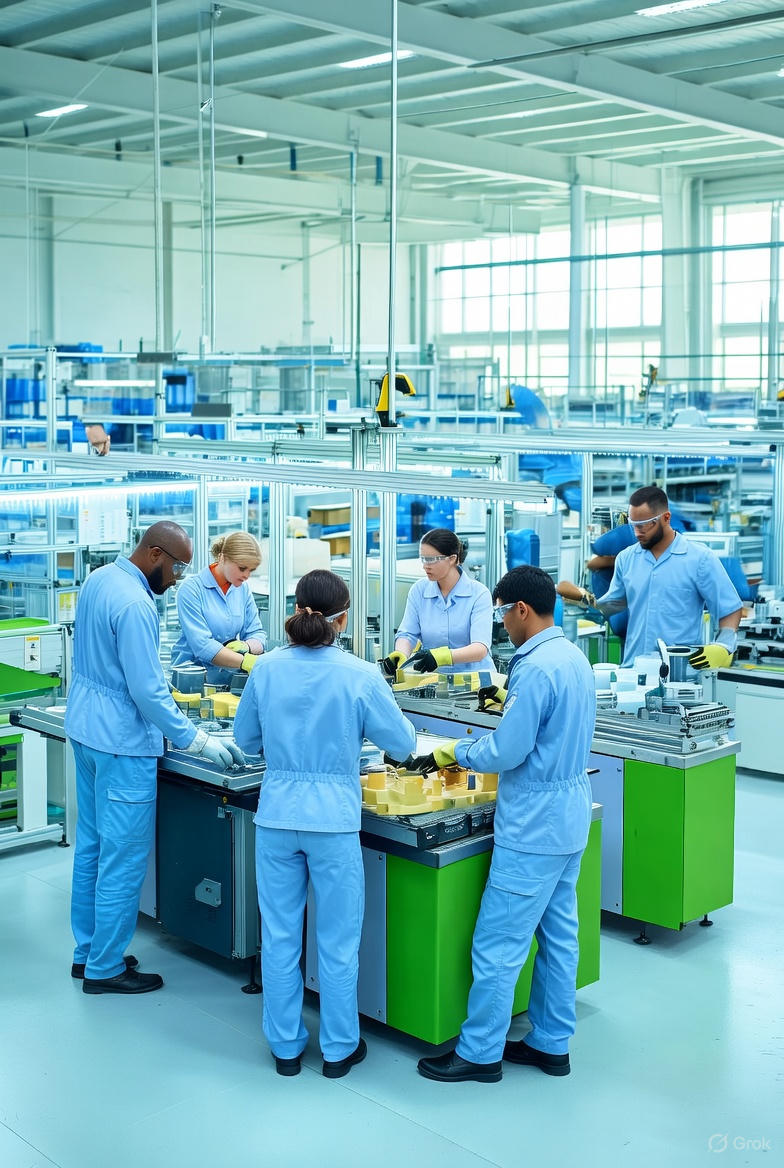What is a Visual Factory (and How Can I Implement One)?
By John Wright
A visual factory is a production facility that visually shares operational information to improve efficiency, safety, and effectiveness. As manufacturers work to increase profit, maximize efficiency, and cut downtime, the concept is becoming more and more widespread.
The idea of a visual factory is built on the visual workplace paradigm developed by Gwendolyn Galsworth in her book Visual Systems. Galsworth is an expert in continuous improvement and lean manufacturing. She set out to translate those ideas and processes into visual tools manufacturers could use to get better.
The Toyota Production System, the foundation of continuous improvement and lean manufacturing thinking, included many visual applications, but few Western authors took note of how effective they were in making the system work.
By installing vital information as close to the point of use as possible, Toyota was able to lower defects, save managers time, and reduce wasted motion, a key source of hidden downtime. Toyota’s ultimate goal is to create a factory where all key information can be seen and understood without saying a word.
That information includes instructions, warnings, real-time production metrics, and anything else that can be useful in knowing what’s happening (and supposed to happen) in a factory at any given moment.
Modern manufacturers around the world use Toyota and Galsworth’s learnings to implement lean manufacturing environments, organize their factories, and build the right systems for success.
What are the benefits of a visual factory?
The benefits of a visual factory include:
Safety: When a worker has clear instructions, standard operating procedures, and signage, they’re more likely to do things right. When they do things right, they don’t get injured.
Higher quality: Clear instructions result in higher quality. Visibility into shift, area, and line metrics show spots with quality gaps, which can then be addressed.
Reliability: Total visibility unlocks predictive maintenance and exposes areas where team training is needed. Addressing issues before they become a problem means your factory can deliver consistently excellent products.
Speed of production: Real-time production metrics show shifts and lines if they’re meeting their goals, and help them find out any places that are lagging behind. Those areas can be repaired or shored up to get things moving and meet targets.
If your factory uses Overall Equipment Effectiveness (OEE) as a metric, you’re already putting the pieces together as to how a visual factory is an environment that fosters OEE improvement.
Customer satisfaction: With a visual factory, customers get high-quality products reliably delivered on time. What’s better than getting exactly what you asked for, when it was promised?
How can I implement a visual factory?
To get started making your facility into a visual factory, invest in three key areas.
Employee Engagement
Ask your employees. What parts of their day are painful and unintuitive? What confused them when they first joined? What are the hardest things they have to explain to new employees?
Static Signage
This includes warning signs, instructions on machines, and wayfinding around your facility. Make getting around and doing the job as simple as possible without the need to constantly flag down a manager.
Your employees are only people. The need for clear visual signage is only getting bigger with rising employee turnover making 20-year employees a rare sight. Also, many employees are entering the workforce with English as their second language.
Real-Time Production Monitoring
Know how each process area, shift, and assembly line is doing, preferably with IoT hardware that links right to your machines. That data helps you quickly identify and solve problems, spot processes that are lagging behind and need to be fixed, and track production metrics for management.
A strong production monitoring system should be able to link to your existing Standard Operating Procedure documents. That takes employees straight from production metrics to process documentation and cuts wasted motion.
The Glassdome Production Monitoring solution does all of that. And at a price that might come as a pleasant surprise.
With the right plan and the right data, your visual factory will be humming in no time.
Ready to turn your factory into a visual factory?
Talk to a Glassdome manufacturing expert today.


